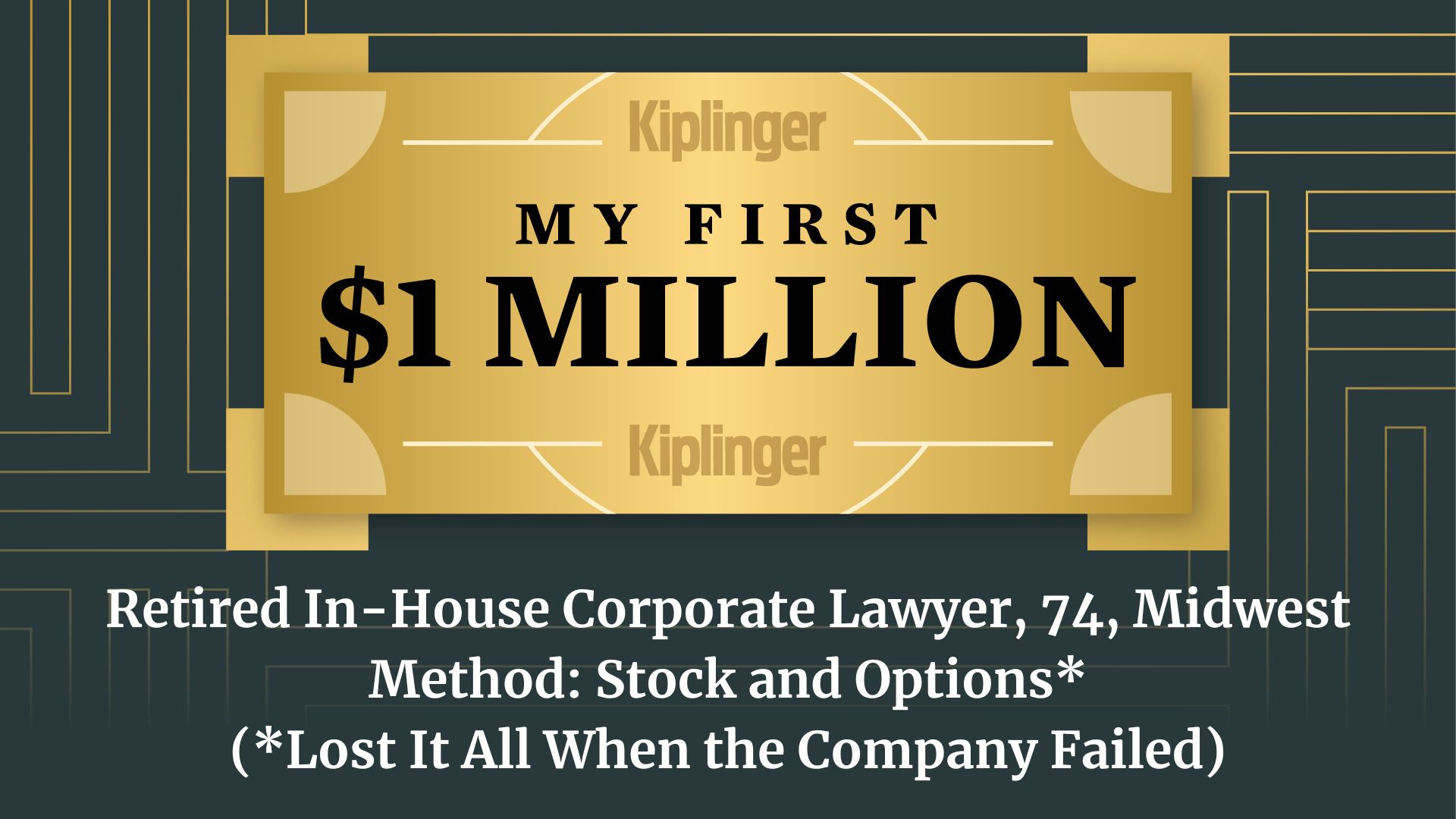Car Insurance Costs Skyrocket in 2025
Looking to save on your car insurance policies? We provide ways to lower your costs.

Sean Jackson
This year, expect to pay more for your car insurance. Even though inflation has been slowing down, car insurance costs have gone up.
Since 2024, car insurance rates have surged 12%, according to Bankrate. The report determined the annual cost for full coverage car insurance in 2025 to be $2,678, compared to $2,543 in 2024
For someone earning the median household income of $74,580, that’s 3.6% of their entire income.
From just $107.88 $24.99 for Kiplinger Personal Finance
Become a smarter, better informed investor. Subscribe from just $107.88 $24.99, plus get up to 4 Special Issues

Sign up for Kiplinger’s Free Newsletters
Profit and prosper with the best of expert advice on investing, taxes, retirement, personal finance and more - straight to your e-mail.
Profit and prosper with the best of expert advice - straight to your e-mail.
Insurers raise costs in response to your risk as a driver, such as where you live and whether you have a teenager on the policy. They also raise rates based on risks beyond your control, like inflation.
"Car insurance is reactionary, meaning the premium increases we’re seeing now are a result of insurance companies trying to recoup the losses they experienced over the last few years and accurately assess the risk of future loss," Bankrate analyst Shannon Martin shares with Kiplinger.
"Between 2020 and 2024, inflation increased the cost of vehicle parts and labor, car crash fatalities increased by over 10% and we saw a significant rise in extreme weather and vehicle theft claims. All these factors contribute to the high rates we’re seeing today."
Car insurance costs in 2025
Along with these factors, Bankrate's report also found several “life events” that significantly increase your car insurance payments, and the average added cost of each.
- Adding a 16-year-old to the policy: $3,079
- Convicted of a DUI: $2,504
- Credit score decreases from ‘good’ to ‘poor’: $2,030
- Involved in a car accident: $1,179
- Receives a speeding ticket: $592
Where you live also plays a role in how much you’ll pay. Bankrate found the most and least expensive states and metro areas for car insurance, showing just how much one state can vary to the next in terms of insurance prices.
By analyzing the average total percentage of household income spent on car insurance, they found the "true cost" of car insurance for each state.
- State with the lowest true cost: Idaho
- State with the highest true cost: Florida
- Metro area with the lowest true cost: Cleveland
- Metro area with the highest true cost: Brooklyn
While car insurance becomes increasingly more difficult to afford, beware the perils of underinsurance. Because car insurance rates have surged in 2025, many drivers are dropping coverage, putting both them and insured drivers without enough uninsured and underinsured motorist coverage at financial risk.
“There is good reason to ensure that you and your family are properly protected with your own insurance coverages, Jolie Deutschman at Rockville, Maryland-based law firm Stein Sperling, tells Kiplinger.
"Getting auto insurance is what is costly. But, once you have coverage, increasing your coverage limits does not tend to increase your premium by very much at all!"
The Insurance Research Council found that on average, one in seven drivers, or 14% of motorists, were driving without liability insurance. The states with the highest percentage of uninsured motorists were the District of Columbia, with 25.2% of motorists uninsured, and New Mexico, with almost a quarter of drivers uninsured.
For this reason, Deutschman warns people not to assume that other drivers have coverage, and to instead make sure their own coverage is sufficient.
"If you can’t afford a $300,000 liability and uninsured/underinsured policy, then be sure to get the most you can afford ($100,000). Same with Medpay/PIP — if you can’t afford $10,000 per car, then get at least $5,000 a car," says Deutschman.
"Having good insurance is the only way you can drive comfortably knowing that you and your family are protected."
You can compare car insurance rates today by using the tool below, powered by Bankrate.
Save on car insurance
Below are ways drivers can make car insurance costs more affordable, without dropping the appropriate coverage.
- Shop around: Car insurance prices will differ between companies, so shopping around can help you find the best policy at the best price. Once you have a policy, make sure to reshop your insurance before your policy renews to ensure you're receiving the best rate.
- Raise your deductible: If you raise your deductible, you can lower your premium costs. However, be sure you can afford your deductible in the event an accident does occur.
- Bundle insurance: Insurance companies will usually offer a discount when you purchase two types of insurance from them. For example, if you purchase both your homeowners insurance and car insurance from Progressive, you can save on average 7% on your auto policy.
- Boost your credit score: Many car insurance companies take your credit score into account when providing a quote. Ideally, you'll have a good credit score, which will help you get lower prices on your policies. Make sure to check your credit report regularly for any discrepancies and boost your credit score if you have bad credit.
- Take a defensive driving course: If your insurance costs are elevated due to tickets or accidents on your driving record, you could benefit from taking a defensive driving class. Not only will it help you avoid future infractions, but many insurance companies offer discounts for drivers who complete a course. According to State Farm, drivers can save in some cases 10% on applicable coverages with the completion of a defensive driving course.
The bottom line
Car insurance rates are on a continual rise. While there are some things out of your hands like where you live, there are factors you can do to lower cost.
Shopping around for insurance helps you identify the best rates in your area. And by playing around with policy limits, you can lower overall costs. Just be sure you can afford any out-of-pocket expenses that might arise due to coverage changes.
Related Content
Profit and prosper with the best of Kiplinger's advice on investing, taxes, retirement, personal finance and much more. Delivered daily. Enter your email in the box and click Sign Me Up.

Erin pairs personal experience with research and is passionate about sharing personal finance advice with others. Previously, she was a freelancer focusing on the credit card side of finance, but has branched out since then to cover other aspects of personal finance. Erin is well-versed in traditional media with reporting, interviewing and research, as well as using graphic design and video and audio storytelling to share with her readers.
- Sean JacksonPersonal finance eCommerce writer
-
 I'm want to give my 3 grandkids $5K each for Christmas.
I'm want to give my 3 grandkids $5K each for Christmas.You're comfortably retired and want to give your grandkids a big Christmas check, but their parents are worried they might spend it all. We ask the pros for help.
-
 If You're Not Doing Roth Conversions, You Need to Read This
If You're Not Doing Roth Conversions, You Need to Read ThisRoth conversions and other Roth strategies can be complex, but don't dismiss these tax planning tools outright. They could really work for you and your heirs.
-
 Could Traditional Retirement Expectations Be Killing Us?
Could Traditional Retirement Expectations Be Killing Us?A retirement psychologist makes the case: A fulfilling retirement begins with a blueprint for living, rather than simply the accumulation of a large nest egg.
-
 My Teen Crashed His Car and Now Our Insurance Has Tripled. What Now?
My Teen Crashed His Car and Now Our Insurance Has Tripled. What Now?Dealing with the costly aftermath of a teen car accident is stressful. Here are your options for navigating it.
-
 My First $1 Million: Retired In-House Corporate Lawyer, 74, Midwest
My First $1 Million: Retired In-House Corporate Lawyer, 74, MidwestEver wonder how someone who's made a million dollars or more did it? Kiplinger's My First $1 Million series uncovers the answers.
-
 I'm an Insurance Pro: Going Without Life Insurance Is Like Driving Without a Seat Belt Because You Don't Plan to Crash
I'm an Insurance Pro: Going Without Life Insurance Is Like Driving Without a Seat Belt Because You Don't Plan to CrashLife insurance is that boring-but-crucial thing you really need to get now so that your family doesn't have to launch a GoFundMe when you're gone.
-
 The Top 22 Gifts for Grandkids from Walmart in 2025
The Top 22 Gifts for Grandkids from Walmart in 2025From PlayStation to Labubu, you'll find the hottest gifts of 2025 for your grandkids at Walmart this year. Some of them are up to 78% off.
-
 CD vs. Money Market: Where to Put Your Year-End Bonus Now
CD vs. Money Market: Where to Put Your Year-End Bonus NowFalling interest rates have savers wondering where to park cash. Here's how much $10,000 earns in today's best CDs versus leading money market accounts.
-
 Meet the World's Unluckiest — Not to Mention Entitled — Porch Pirate
Meet the World's Unluckiest — Not to Mention Entitled — Porch PirateThis teen swiped a booby-trapped package that showered him with glitter, and then he hurt his wrist while fleeing. This is why no lawyer will represent him.
-
 Smart Business: How Community Engagement Can Help Fuel Growth
Smart Business: How Community Engagement Can Help Fuel GrowthAs a financial professional, you can strengthen your brand while making a difference in your community. See how these pros turned community spirit into growth.
-
 Smart Money Moves Savers Should Make in 2026
Smart Money Moves Savers Should Make in 2026These steps will get you on the road to achieving your 2026 savings goals.